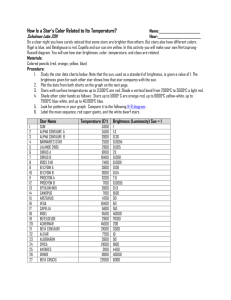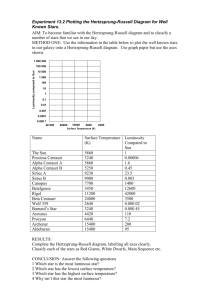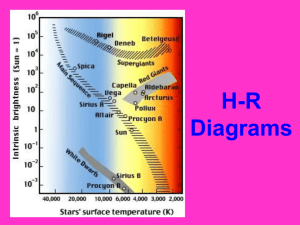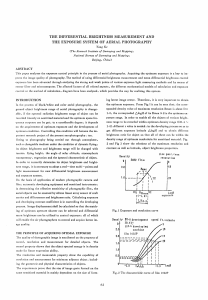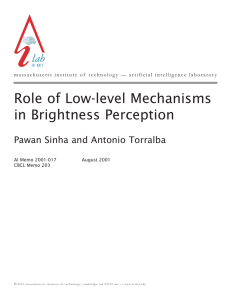Lab Activity: Hertzsprung-Russell Diagram Purpose/Objective: In this
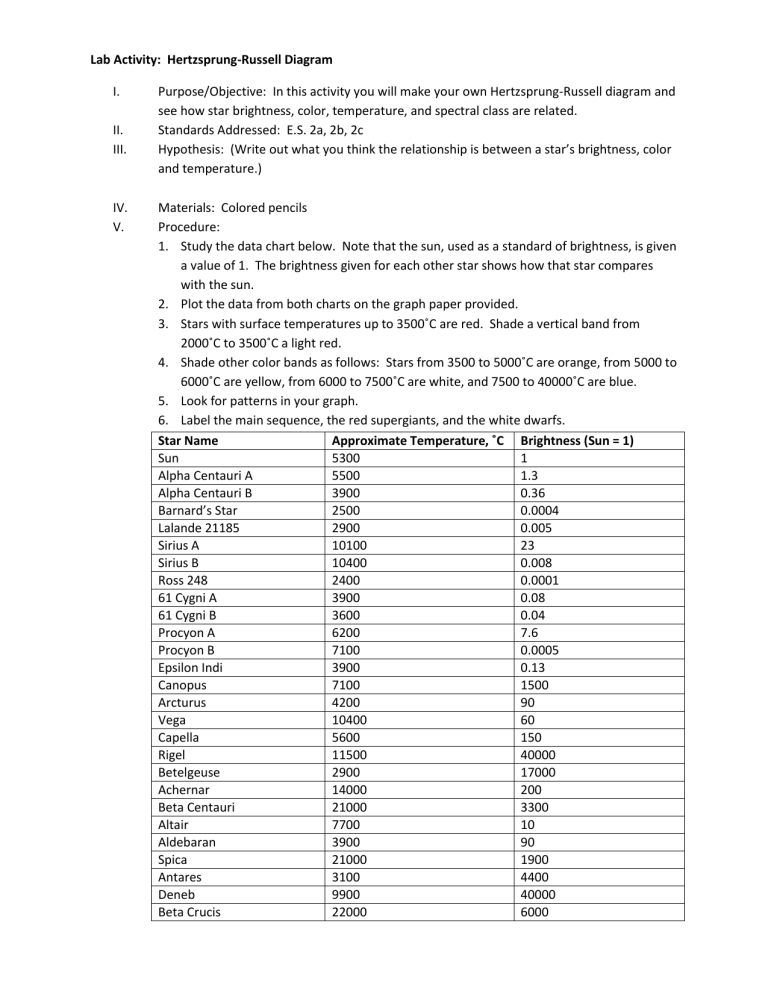
Lab Activity: Hertzsprung-Russell Diagram
I.
II.
III.
Purpose/Objective: In this activity you will make your own Hertzsprung-Russell diagram and see how star brightness, color, temperature, and spectral class are related.
Standards Addressed: E.S. 2a, 2b, 2c
Hypothesis: (Write out what you think the relationship is between a star’s brightness, color and temperature.)
IV.
Materials: Colored pencils
V.
Procedure:
1.
Study the data chart below. Note that the sun, used as a standard of brightness, is given a value of 1. The brightness given for each other star shows how that star compares with the sun.
2.
Plot the data from both charts on the graph paper provided.
3.
Stars with surface temperatures up to 3500˚C are red. Shade a vertical band from
2000˚C to 3500˚C a light red.
4.
Shade other color bands as follows: Stars from 3500 to 5000˚C are orange, from 5000 to
6000˚C are yellow, from 6000 to 7500˚C are white, and 7500 to 40000˚C are blue.
5.
Look for patterns in your graph.
6.
Label the main sequence, the red supergiants, and the white dwarfs.
Star Name
Sun
Alpha Centauri A
Alpha Centauri B
Barnard’s Star
Lalande 21185
Sirius A
Sirius B
Ross 248
61 Cygni A
61 Cygni B
Procyon A
Procyon B
Epsilon Indi
Canopus
Arcturus
Vega
Capella
Rigel
Betelgeuse
Achernar
Beta Centauri
Altair
Aldebaran
Spica
Antares
Deneb
Beta Crucis
7100
4200
10400
5600
11500
2900
14000
21000
7700
3900
21000
3100
9900
22000
Approximate Temperature, ˚C Brightness (Sun = 1)
5300
5500
1
1.3
3900
2500
2900
10100
0.36
0.0004
0.005
23
10400
2400
3900
3600
6200
7100
3900
0.008
0.0001
0.08
0.04
7.6
0.0005
0.13
1500
90
60
150
40000
17000
200
3300
10
90
1900
4400
40000
6000
VI.
Data/Analysis
See other sheet.
VII.
Conclusion
In your own words, what is the purpose/objective for this activity? What did you learn about the purpose/objective? What was your hypothesis? How close was it to the actual data given from the graph? Explain. What differences did you observe between your hypothesis and the data?
